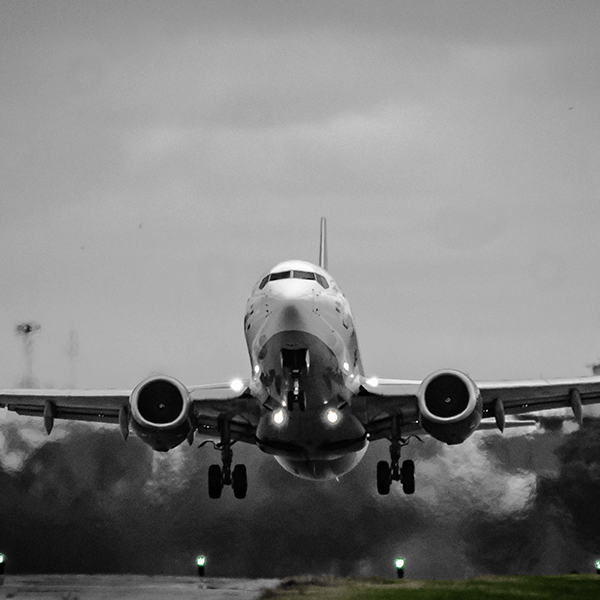
Gas detection is used across a variety of industries to keep worker safety a top priority. But how often is it thought about gas leaks and detection in the aviation sector? Confined spaces in aircraft carriers can become a large risk if oxygen levels are altered and toxic gases at high concentrations, such as jet fuel, are present.
Oxygen-deficient and enriched areas create combustible domains, specifically in confined spaces, are one of the main hazards that must be monitored in aircrafts to maintain the safety of the pilots and, if applicable, it’s customers. Hazards specifically from fuel tank entry come from toxic and combustible effects from jet fuel and other maintenance compounds. Jet fuel toxicity is extremely dangerous in constricted areas, with conditions changing very rapidly due to whether the initial concentration is high or low. The typical concentration of oxygen (O2) in a standard aircraft environment is 20.9%. If levels reduce to a 12 to 19.5% range, judgment is impaired, increased heart rate, and fatigue. If levels drop into a 6 to 12% range, fatigue will worsen and nausea or vomiting can occur. The final stages of oxygen deficiency result in convulsions, cardiac arrest or even death. This is why personal gas detection equipment for pilots is highly recommended and used by many companies in aviation.
Jet fuel can result in depleted oxygen levels through oxidation or displacement and lead to a toxic and combustible environment. Hazardous exposure levels started coming into effect around 2003, with threshold limits for jet fuel as an eight-hour time-weighted average of 200mg/m3 (total aerosol and vapor) that converts to 30 parts per million in isobutylene units. This is possible through photoionization detectors (PID). Lower explosive limits (LEL) on PID sensors are displayed as percentages and are used as the minimum concentration standard of combustible gas or vapor in the air that will react if a source of ignition is present. The upper explosive limit is also used to the maximum standard of concentration and when used in consideration with the LEL, creates a risky flammability range. Since there are different types of jet fuels, each possesses its own flammability range. Concentrations within the range will burn or explode if an ignition source is present. This method was used as the standard of safety for hazard detection, but as new regulations have been placed and more was learned, LEL sensors are not capable of detecting hydrocarbons like jet fuel at low enough levels to be useful for toxicity detection. They result in higher parts per million (ppm) concentration levels, leading to more compromised safety environments. This is why PIDs are preferred for detection because they can detect lower level ppm measurements. Other compounds such as methyl ethyl ketone, toluene, and xylene can be monitored within an aircraft using PID technology.
Besides having the proper gas detection equipment, other safety considerations include sampling equipment, maintaining an adequate level of ventilation, and the ability to increase the level of ventilation in confined spaces. Standard maintenance controlling ventilation will need to properly be maintained to ensure oxygen deficiency does not occur from increasing ventilation within the aircraft. All equipment should be classified as intrinsically safe so there is no chance of ignition as well. Communication between the crew and the maintenance team is essential to determine monitoring schedules and rescues in unsafe environments.
To find out more about gas detection within the aviation industry, visit our website page specifically for aerospace science. For more information regarding products for aviation gas detection, visit our products page or contact ION Science today.











